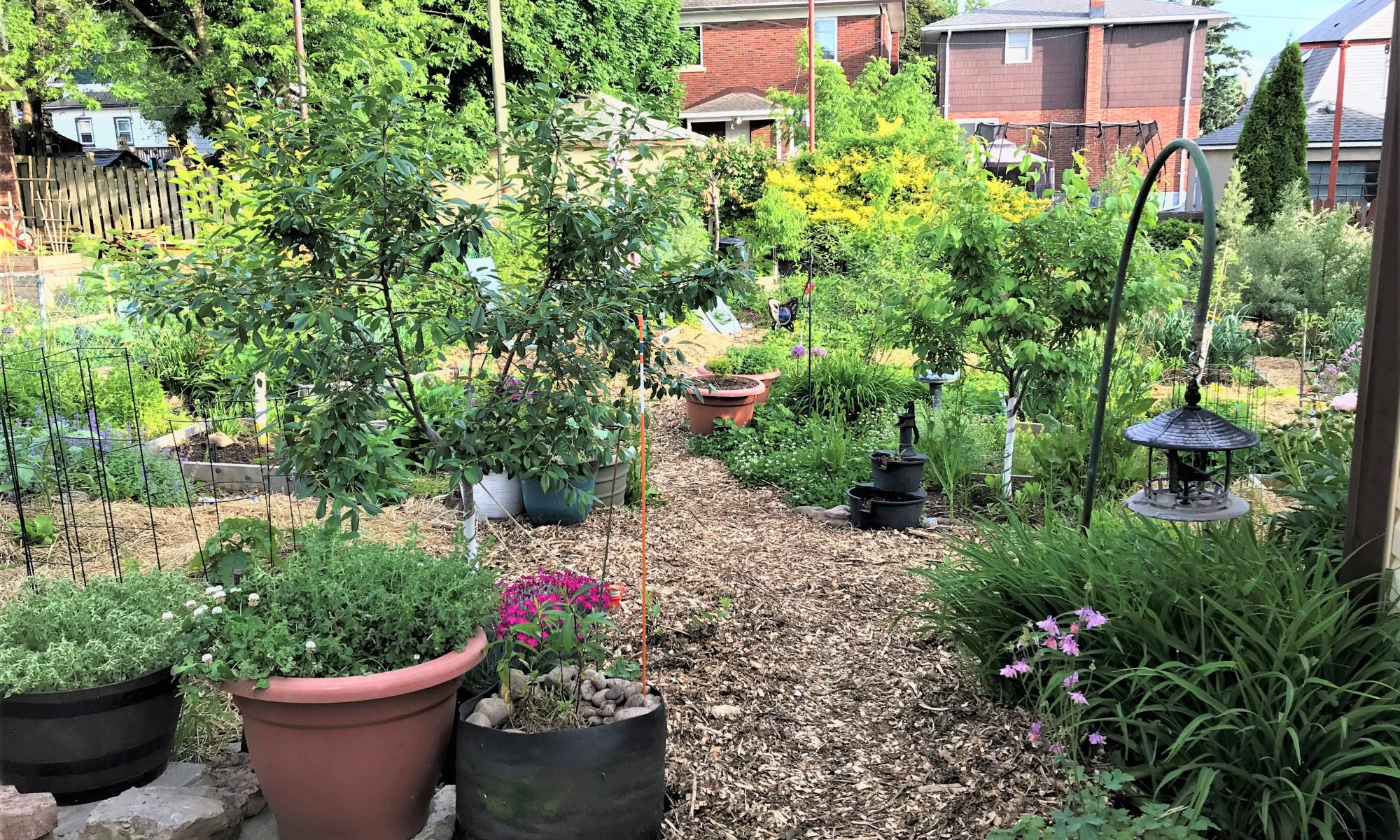I had learned from sages that to evolve, to be a person that progresses is a worthwhile journey to be on. Even if not progressing in a straight, linear line, even if through loops and slides, just being a seeker, a striver and sometimes a struggler is exactly what will bring us the best results.
As in life, so it is in the garden. I tried many ways and styles of gardening and I have evolved over the years as a gardener. What I love most about gardening is that It can change so much from year to year.
In previous posts I explained how my journey led me to permaculture and how I enjoyed transforming my space into a food forest garden. I had planted and tended a beautiful perennial garden, with lots of condition challenges but still with many successes. When I decided to turn this garden into a 7 layered food forest with a heavy and diverse production of food, I thought I was sacrificing the beauty of the perennial garden in all its blooms, textures and structure. I intended to get rid of most perennials and shrubs and I gradually did. Would I need to compromise blooms? How about beauty? Are blooms even needed in a food forest?
Blooms, of course do provide services to food production: they draw pollinators, emit scent, draw beneficial insects, and repel harmful ones. Plants that bloom increase photosynthesis which sends sugars as root exudates into the soil and promotes soil biology. They increase root mass, keep soil from eroding and increase water infiltration in the soil. Some of the flowers are even edible!
Blooms that give service are blooms that delight! Blooms that are simply for beauty can co exist with the food forest design as well. They are important, in my opinion simply to keep us, the centre element of the design, happy and balanced. While so, we might find these flowers to be indicators for the right time to do a garden task, such as the famous and helpful adage that says “when forsythia is in bloom it is time to prune the roses”. Or you can use showy flowers for cutting and making bouquets. As long as we make the most use of our gardens, I think we are on the right track!
My goal is to have blooms from as early as possible in spring to as late as possibly. I will be winter-sowing many flowering plants this coming January (two months from now). I am into planting indigenous perennials so most of them are native wildflowers. In this post I will show you the blooms we had so far in the food forest, month by month. A few are remnants from the perennial garden. I have hundreds of pictures. I will choose two or three pictures from each month and hope that this blog will allow me to upload them. Expect updates for sure 🙂
I want to encourage you to try new things, think of new exciting ways to enjoy your garden and enrich your life.
See you in the garden!
Sharona

